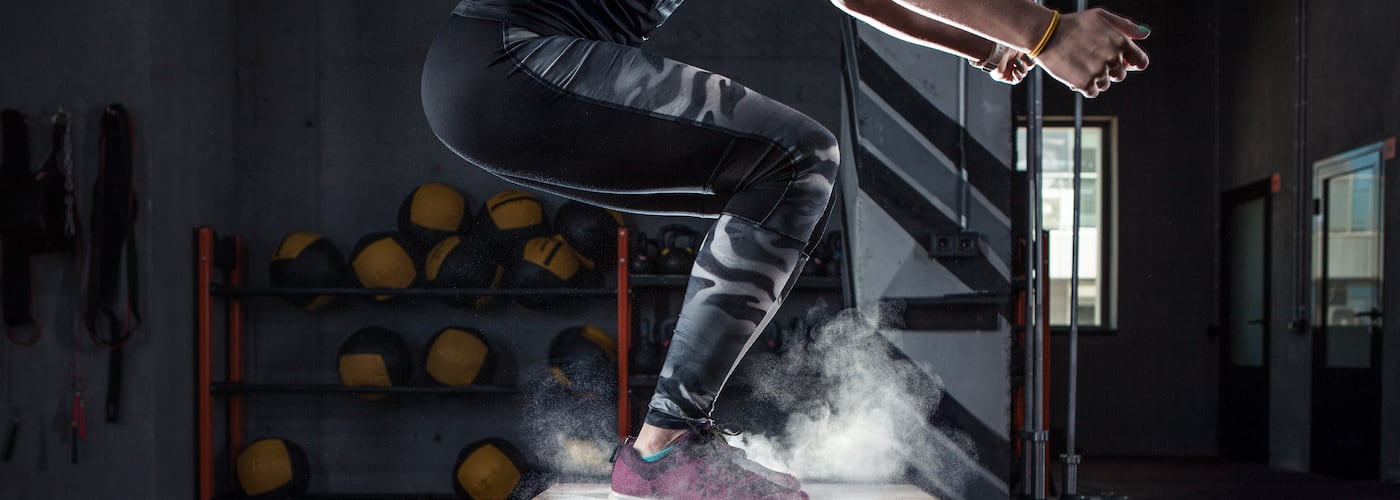Plyometrics are quick and explosive movements designed to increase strength and speed (hence, plyos mean “short”). Plyometrics are popular in HIIT exercises, and athletes implement them into their training routines. Plyometrics are derived from Russian research to train Olympic athletes in track and field. Unlike the typical training exercises that include long and slow movements to increase muscle mass and strength, plyometrics is on the opposite side of the spectrum, which involves short and rapid movements. So whether you’re looking to mix up your exercise variety or just curious about this type of exercise, check out how plyometric training can benefit you and how you can get started!
The Ultimate Guide to Plyometric Training
Benefits of Plyometrics
Strength
The use of plyometric training can increase muscle power and the speed of the muscles. These exercises activate the fast-twitch fibers in our muscles which then converts strength into speed. In addition, stronger tendons mean fewer injuries and less stress on your muscles.
Endurance
Because this type of training is rooted in training Olympic athletes, plyometrics is known to increase muscle endurance and stamina. This allows athletic performance to perform at a higher intensity for longer periods.
Burn more calories
You can burn an average of 500 calories by doing an hour of plyometric training. Consider plyometrics, another form of cardio that involves multiple muscle groups working simultaneously. Another amazing benefit of plyometrics is that you can do these exercises anywhere, and they don’t require much fitness equipment!
Athletic performance
What makes plyometrics versatile is that it’s beneficial to all skill levels and ages. So whether you’re training for a sport or trying to shed a few pounds, plyometrics is viable for strength, flexibility, and conditioning.
Plyometric Exercises for Beginners
Jump squats
Jump squats are a great plyometric exercise that can be done with or without stackable boxes. Start in a squat position and explode off your feet into a jump. Keep your core engaged and land back into the squat position. You can even do jump squats on TRX!
Burpees
A burpee is a full-body plyometric exercise that can get your heart rate going! There are many variations of a basic burpee, but here’s one to start. Begin standing and move into a squat position with both hands on the ground. Then, push off your body into a plank position while engaging your core. Push your feet back into that squat position and back to the standing position. If you want to challenge yourself, instead of ending in a standing position, push off into an explosive jump.
Power skipping
Power skips are great for strengthening your major muscle groups and are fairly easy to do. It’s the same as skipping, but when you catch air, pull up your knees as high as possible.
Mountain climbers
Mountain climbers start in a strong plank position. Just like climbing a ladder or “mountain,” drive each knee towards your chest and do this as quickly as you can. Remember to keep your core tight and your buttocks the same height as your shoulders.

Related Stories
When Courage Takes Flight: Lessons From a Women’s Skydiving Record Attempt
Photo by Taylor Buffington (T-Buff) We went to Eloy, Arizona on a mission — to...
Nov
Sciatica: 1, LeBron: 0 (For Now)
File photo: LeBron James #6 of the Los Angeles Lakers. (Photo: Thearon W. Henderson /...
Oct
Pickleball vs. Tennis: The Science of Recovery
For years, tennis was the stand-in for movement: endurance, coordination, and power all at once....
Oct
5 Ways to Support Bone Strength with HiDow
World Osteoporosis Day (October 20) October 20 is World Osteoporosis Day, and chances are, you’ve...
Oct
FDA-Cleared Is a Flex. Here’s Why.
Pulling Back the Curtain You’ve seen it on boxes, on websites, in ads: FDA-cleared. It...
Sep
This Is Fibro. This Is Larry.
September is Pain Awareness Month. And we’re not here to give you medical definitions or...
Sep